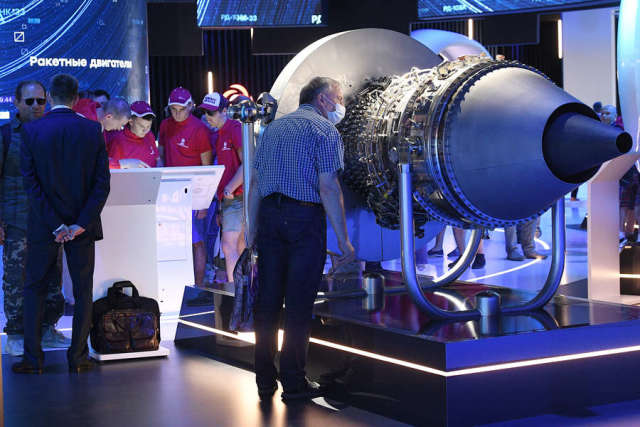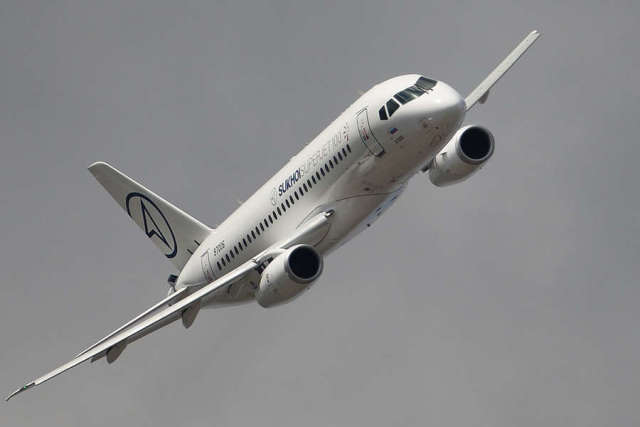Experts told when the "Superjet" will receive a Russian engine
Against the background of tougher sanctions in Russia, they are forcing the creation of a new, "import-substituted" version of the domestic Sukhoi Superjet passenger aircraft. In particular, for this it is necessary to accelerate the certification of new PD-8 engines. Experts told the newspaper.Ru", how exactly can the process be accelerated, what is the peculiarity of the new engine, as well as the potential harm to it from Western sanctions.
The head of the Ministry of Industry and Trade of the Russian Federation Denis Manturov instructed to speed up the certification of the new Russian PD-8 engine, and to carry it out within 12-14 months.
PD-8 is a key element of the SSJ-New aircraft being developed, a modification of the Sukhoi Superjet 100. The main task of the designers of this version of the aircraft was to get rid of imported parts to the maximum. The new engine is being created by the Rostec United Engine Corporation (UEC).
The executive director of the agency "Aviport" Oleg Panteleev explained "To the newspaper.Ru", what new certification terms are we talking about. According to him, if we count 12-14 months from now, it will be the beginning-middle of 2023, the second quarter. This means that we are talking about reducing the terms by six months, since it was previously planned to finish by the fourth quarter.
Panteleev said.
The expert also spoke about the certification of this engine in Europe.
"I have not heard that PD-8 was planned to be certified according to European standards, but we remember that European standards are much stricter than Russian ones, in particular, on tests for volcanic ash. And if according to the PD-14 program it was planned to complete the tests specifically for the European Aviation Safety Agency (EASA), and this created a load on the bench base, then if there is no task to certify for EASA, we can swap something and use some stands. Our main task is to meet the needs of the Russian aviation industry, that is, domestic companies. For this, no European or other certification is needed," he explained.

At the presentation of the new PD-8 engine at the MAKS-2021 International Aviation and Space Salon
Image source: Alexey Maishev/RIA Novosti
Tests of the new engine are already actively underway: in early February, a gas generator was tested in a pressure chamber, and the first launches of the experimental engine are scheduled for March.
"The success of the tests will depend on whether the iron confirms the declared characteristics or not. Anything can happen when testing a technique. This engine uses materials and technologies not from scratch, but those that the enterprises of the UEC have already mastered. Organizational methods of interaction were a very important innovation in the PD-8 program. This is parallel design and modeling. The question is not that it was before, but that now many things in the PD-14 and PD-35 programs have been worked out. But if UEC-Aviadvigatel was the leading organization in these programs, now Rybinsk is the main performer, where the aircraft engine is assembled at the site," Panteleev said.
The specialist also revealed what priorities were set when setting the task.
"The general Designer of the United Engine Corporation (UEC) Yuri Shmotin, when asked about the novelty of PD-8, some superalloys and technical breakthroughs, answered the following: "The task is to make the engine fast enough, at the modern level in terms of characteristics and minimize risks rather than win tenths of percent of efficiency," he explained.
However, it was fundamentally important to create a completely Russian engine for the new Superjet.
"Representatives of the Irkut Corporation stated that it would be a fully import-substituted aircraft. This means that the developers and manufacturers of the systems will be Russian companies. That's when it comes to the element base, whether there will be chips that will be purchased in China - we do not know," Panteleev said.
Vladimir Karnozov, an analyst at Aviation Explorer, also confirmed that PD-8 is not directly dependent on imports.
"Yes, this is a completely Russian engine. Imported equipment will be used in its manufacture, but this does not play any role - it has already been purchased, adjusted and is working, including at the factory in Rybinsk. Even if you use a Western machine, so what, the engine still remains Russian," he said.
However, according to the expert, Western sanctions could potentially still harm production.
- Karnozov explained.
The specialist also spoke about the advantage of the PD-8 over the engine, which is installed on the "Superjets" now.
"PD-8 will have better characteristics, since it was made almost a quarter of a century later. The old engine has a French gas generator developed in the late 1990s, that is, it is 20 years old. The new Russian engine will have a gas generator based on the PD-14, which is much more modern. Thanks to the new generator, the temperature of the gases in front of the turbine will increase and the degree of pressure increase will increase. These are the most important parameters for civil aviation that affect fuel consumption," Karnozov said.
At the moment, the French-Russian PowerJet SaM146 engine is installed on the Superjets. Its gas generator, combustion chamber and high-pressure turbine are made by the French, and the "cold" part - a fan and a low-pressure turbine - is produced by the Russian company Saturn. The general assembly also takes place in Russia.
Vasily Zaitsev

